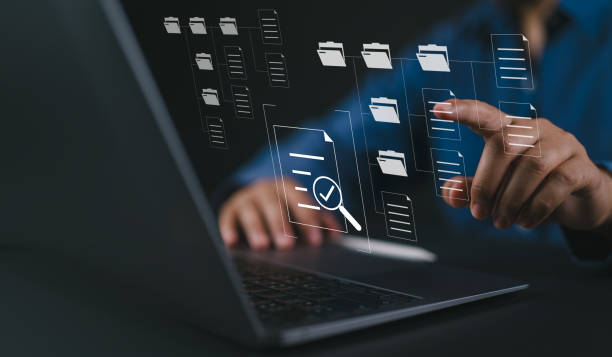What is On-Page SEO and why is it important?
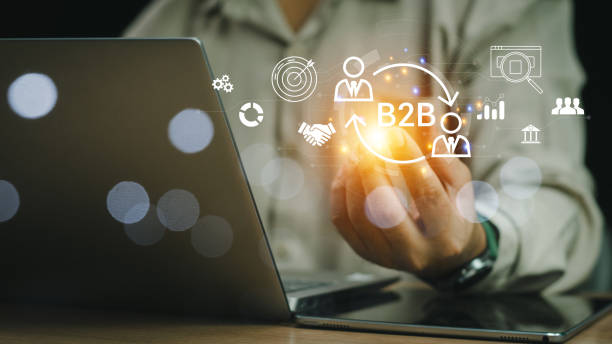
What is On-Page SEO and why is it important?
On-Page SEO refers to the set of actions taken within a website to improve its ranking in search engines.
These actions include optimizing content, site structure, HTML tags, and page loading speed.
The importance of on-page SEO stems from the fact that it helps search engines better understand your site’s content and display it to users who are looking for relevant information.
In fact, on-page SEO is a fundamental foundation for any #SEO strategy.
If your site’s on-page SEO is not done correctly, your efforts in the field of #Off-Page SEO will not achieve the desired result either.
SEO (Search Engine Optimization) means optimizing the website for search engines, and on-page SEO is one of its main pillars.
By optimizing on-page SEO, you can show search engines that your website has high-quality content that is relevant to users’ searches.
This increases your website’s ranking in search results and ultimately increases your website’s traffic.
Without strong on-page SEO, a website may not be seen even with the best content.
Therefore, investing in on-page SEO is a necessity for any website that wants to be seen well in search results and attract organic traffic.
#On_Page_SEO is an opportunity to improve user experience and increase the credibility of your site.
Are you lagging behind the big online stores?
Rasaweb will bring your business online with professional e-commerce website design and increase your market share!
✅ Increase brand credibility and customer trust
✅ Easy shopping experience leads to more sales
⚡ Take action now to receive free website design consultation!
Keyword Research – The First Step in On-Page SEO
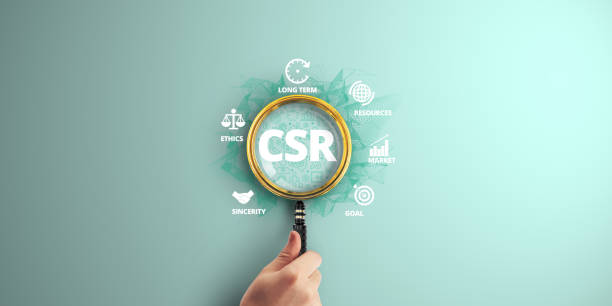
Keyword Research – The First Step in On-Page SEO
Keyword research is the process of identifying the words and phrases that users use to search for information related to your business.
These keywords should be used in the site’s content, HTML tags, and other parts of the site so that search engines can display your site for relevant searches.
There are various tools for keyword research, including Google Keyword Planner, Ahrefs, and Semrush.
Using these tools, you can find keywords related to your business, check their search volume, and evaluate the level of competition for these words.
Keyword research helps you adjust your content strategy based on user needs and produce content that is attractive and useful for them.
Choosing the right keywords and using them correctly in the site’s content is one of the most important factors for success in on-page SEO.
You should make sure that your chosen keywords match the site’s content and are used naturally in the text.
Using too many keywords (#Keyword Stuffing) can have a negative impact on your site’s ranking.
Content Optimization – The Heartbeat of On-Page SEO
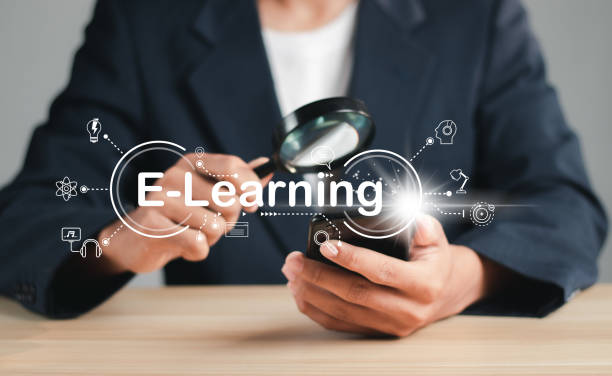
Content Optimization – The Heartbeat of On-Page SEO
Content is king! This phrase is very common in the world of SEO and means that producing high-quality and relevant content is the most important factor in improving a site’s ranking in search engines.
Your content should be useful and attractive to users and answer their questions.
Also, it should be optimized for search engines so that it can be seen well in search results.
To optimize content, you should use keywords in the title, meta descriptions, subheadings, and body text.
Also, you should use images and videos to make the content more attractive and place appropriate internal and external links in the text.
Content optimization is an ongoing process, and you should constantly review and update your site’s content.
Content optimization is one of the main pillars of on-page SEO.
High-quality content not only attracts users to your website, but also increases your website’s credibility with search engines.
As a result, your website gets a higher ranking in search results.
| Element | Description | Importance |
|---|---|---|
| Title | Includes the main keyword, attractive and relevant | High |
| Meta Description | A brief and attractive description of the content, including the keyword | Medium |
| Subheadings | Use of related keywords, logical structure | High |
| Body Text | Natural use of keywords, useful and attractive content | High |
| Images and Videos | Optimized with a relevant file name and alt text | Medium |
| Internal Links | Linking related pages to each other | High |
| External Links | Linking to credible and relevant resources | Medium |
HTML Tag Optimization – Roadmap for Search Engines

HTML Tag Optimization – Roadmap for Search Engines
HTML tags provide important information about the content of the page to search engines.
Optimizing these tags can help search engines better understand the content of the page and rank it correctly.
The most important HTML tags that need to be optimized are the Title Tag, Meta Description tag, and Heading Tags.
The title tag should include the page’s main keyword and accurately describe the page’s content.
The meta description tag should provide a brief and attractive description of the page’s content and encourage users to click on the page link in the search results.
Heading tags (H1 to H6) should be used to structure the content of the page and include relevant keywords.
HTML Tag Optimization is an essential part of on-page SEO.
In on-page SEO, optimizing HTML tags is very important.
These tags act like a map for search engines and help them better understand the content of web pages.
Correctly optimizing these tags can significantly improve the website’s ranking in search results.
Are you unhappy with the low sales of your online store?
Rasaweb is your solution for having a professional and high-selling online store.
✅ Significant increase in sales and revenue
✅ Easy and enjoyable shopping experience for customers
⚡ Get a free consultation from Rasaweb right now!
URL Structure – Links That Search Engines Understand
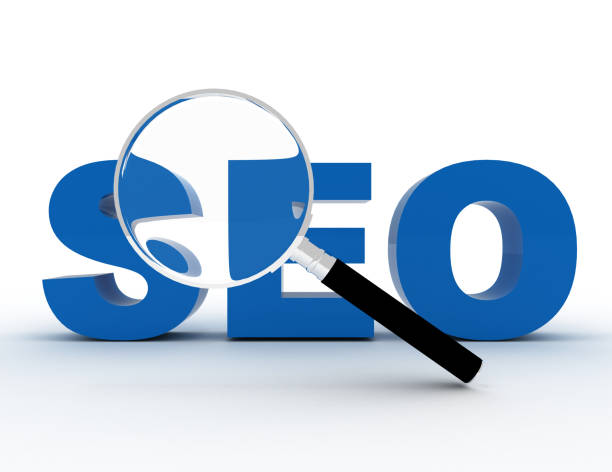
URL Structure – Links That Search Engines Understand
Your site’s URL structure should be such that it is understandable for users and search engines.
URLs should be short, descriptive, and include relevant keywords.
Avoid using long, complex URLs with unnecessary characters.
Also, you should avoid using duplicate URLs for different pages.
An optimized URL structure helps search engines better understand the content of the page and rank it correctly.
Also, an optimized URL structure can help improve user experience and easily guide users to the pages they want.
URL Structure Optimization is an important aspect of on-page SEO.
In fact, a suitable URL structure should be designed to be understandable for both users and search engines.
For example, instead of using complex and incomprehensible URLs like `example.com/page?id=123`, it is better to use short and descriptive URLs like `example.com/seo-internal`.
Page Loading Speed – User Experience and SEO

Page Loading Speed – User Experience and SEO
Page loading speed is one of the important factors in the site’s ranking in search engines.
Users who encounter a page with a low loading speed are likely to leave the site and look for their information on other sites.
This can lead to a decrease in the bounce rate and a decrease in the site’s ranking in search results.
To increase page loading speed, you should use optimized images and videos, use a CDN (Content Delivery Network), optimize your HTML and CSS code, and use a quality hosting.
Page loading speed optimization not only helps to improve on-page SEO but also improves user experience.
In other words, page loading speed has a direct impact on user experience, and user experience is also an important factor in the site’s ranking in search engines.
Therefore, optimizing page loading speed is a necessity for any website that wants to be seen well in search results.
Internal Linking – Creating a Network of Content

Internal Linking – Creating a Network of Content
Internal linking refers to the process of linking from one page to another within a website.
This helps search engines better understand the site’s structure and identify the more important pages.
Also, internal linking can help users easily navigate the site and find the information they need.
For effective internal linking, you should place relevant and useful links in the text and use appropriate anchor text for the links.
Anchor text should accurately describe the content of the destination page.
Internal linking is a great way to improve on-page SEO and increase the credibility of important pages on the site.
For example, if you have a page about “image optimization,” you can link from that page to a page about “page loading speed” because the two topics are related.
By creating a strong internal link network, you can show search engines that your site has rich and relevant content and guide users to the more important pages of your site.
| Strategy | Description | Benefits |
|---|---|---|
| Link to Related Pages | Creating links between pages that have related content. | Increase search engine understanding of site topics, improve user experience. |
| Use Appropriate Anchor Text | Using descriptive and content-related texts that are linked. | Help search engines understand the content of the destination page, increase ranking. |
| Link to Important Pages | Providing links from subpages to main and important pages. | Increase the credibility of important pages, guide users to valuable pages. |
| Avoid Too Many Links on One Page | Maintain balance in the number of internal links to avoid confusion. | Maintain user focus, improve content accessibility. |
Image Optimization – Visual Impact and SEO
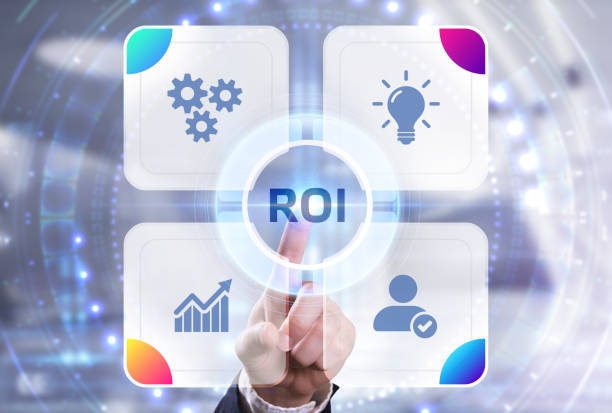
Image Optimization – Visual Impact and SEO
Images play an important role in attracting and engaging users with the site, but if they are not optimized correctly, they can reduce page loading speed and negatively affect on-page SEO.
To optimize images, you should use appropriate formats (such as JPEG for large images and PNG for images with high detail), compress images to reduce their size, and use appropriate Alt Text for images.
Alt text should accurately describe the content of the image and include relevant keywords.
Alt text helps search engines understand the content of the image and rank it correctly.
Image optimization not only helps to improve on-page SEO but also improves user experience.
In fact, image optimization is a two-way process that helps improve both user experience and site ranking in search engines.
By optimizing images, you can make sure that your images are displayed correctly, their size is small, and they help search engines better understand your site’s content.
Does your company website perform as befits your brand? In today’s competitive world, your website is your most important online tool. Rasaweb, a specialist in designing professional corporate websites, helps you to:
✅ Gain customer credibility and trust
✅ Turn website visitors into customers
⚡ Get a free consultation now!
Mobile SEO – Compatibility with the World of Smartphones
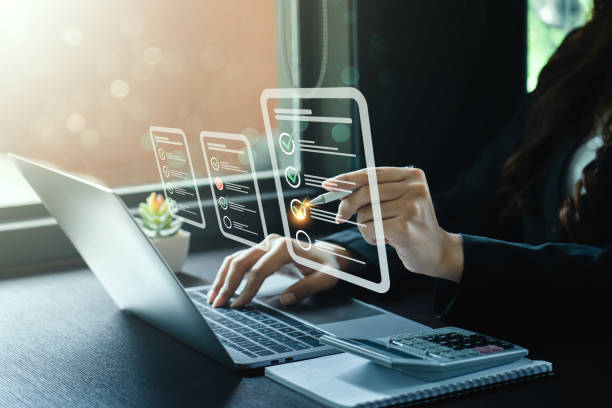
Mobile SEO – Compatibility with the World of Smartphones
Given that more than half of internet traffic is done through mobile devices, Mobile SEO is very important.
Your site should be optimized for mobile devices and provide a good user experience on these devices.
Mobile-friendly sites usually get a better ranking in search results.
To optimize the site for mobile, you should use Responsive Design, increase page loading speed on mobile devices, use appropriate fonts and sizes for display on mobile devices, and use large and touchable buttons and links.
Mobile SEO is an essential part of your on-page SEO strategy.
In other words, mobile SEO means ensuring that your website is displayed correctly on mobile devices and provides a good user experience for mobile users.
This not only improves your website’s ranking in search results, but also increases traffic and user engagement with your website.
Monitoring and Analyzing On-Page SEO – Measuring Success
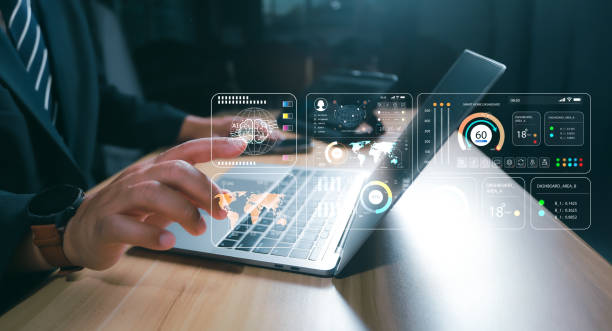
Monitoring and Analyzing On-Page SEO – Measuring Success
After performing on-page SEO measures, you should constantly monitor and analyze the results.
This helps you understand which actions have been effective and which actions need to be improved.
There are various tools for monitoring and analyzing on-page SEO, including Google Analytics and Google Search Console.
Using these tools, you can check site traffic, keyword ranking, bounce rate, time spent on the site, and other important metrics.
By analyzing this data, you can improve your on-page SEO strategy and achieve better results.
SEO monitoring and analysis is an ongoing process and should be done continuously.
In fact, monitoring and analyzing SEO helps you to be aware of your website’s performance in search results and to take the necessary actions to improve it if needed.
This process includes checking website traffic, keyword ranking, incoming links, and other important factors that affect your website’s ranking in search results.
Frequently Asked Questions
| Question | Answer |
|---|---|
| What is On-Page SEO? | On-page SEO includes optimizing elements that are directly in your control and within your website. Its goal is to help search engines better understand the content of the page and improve its ranking. |
| Why is On-Page SEO Important? | On-page SEO gives clear signals to search engines about the content of the page, improves user experience, and increases the chance of attracting organic traffic. |
| What are the most important On-Page SEO factors? | Keywords, Title Tag, Meta Description, URL structure, high-quality content, image optimization, and internal links are among the most important factors. |
| What is the role of the Title Tag in On-Page SEO? | The title tag is one of the most important signals for search engines and users that specifies the main topic of the page. It should include the main keyword and be attractive. |
| How Important is the Meta Description? | The meta description does not directly affect ranking, but it can improve the click-through rate (CTR) by encouraging users to click. |
| How to Optimize Images for On-Page SEO? | By using a descriptive file name, appropriate Alt Text containing keywords, compression to reduce size and correct dimensions. |
| How do Internal Links affect SEO? | Internal links help search engines discover and index site pages, distribute credibility (PageRank) throughout the site, and improve user navigation. |
| Is page loading speed one of the On-Page SEO factors? | Yes, page loading speed is a critical factor in on-page SEO and user experience. Slower pages can lead to higher bounce rates and lower rankings. |
| What features does high-quality content have for On-Page SEO? | High-quality content should be comprehensive, unique, relevant, reliable, readable, and fully answer users’ needs and questions. |
| How can keywords be used in the content? | Keywords should be used naturally in the title, subtitles, the first paragraph, the body of the text, and the alternative text of the images. Avoid Keyword Stuffing. |
and other advertising services of Rasa Web Advertising Agency
Smart Reportage: A fast and efficient solution for managing campaigns with a focus on dedicated programming.
Smart Brand Identity: Professional optimization to increase site visits by customizing the user experience.
Smart Google Ads: Transform click-through rates with the help of SEO-driven content strategy.
Smart Digital Advertising: An innovative service to increase site visits through an SEO-driven content strategy.
Smart Advertising Campaign: Professional optimization for customer acquisition using an SEO-driven content strategy.
and more than a hundred other services in the field of internet advertising, advertising consulting and organizational solutions
Internet Advertising | Advertising Strategy | Reportage Ad
Resources
On-Page Optimization at Moz
,The Comprehensive Guide to On-Page SEO at Ahrefs
,On-Page SEO: The Complete Guide at Semrush
,What is On-Page SEO? Search Engine Land Guide
? To upgrade your business in the digital world, Rasaweb Digital Marketing Agency is your trusted partner. Among our specialized services, website design with a modern user interface creates an unparalleled user experience for your audience.
📍 Tehran, Mirdamad Street, next to the Central Bank, South Kazerun Alley, Ramin Alley No. 6

